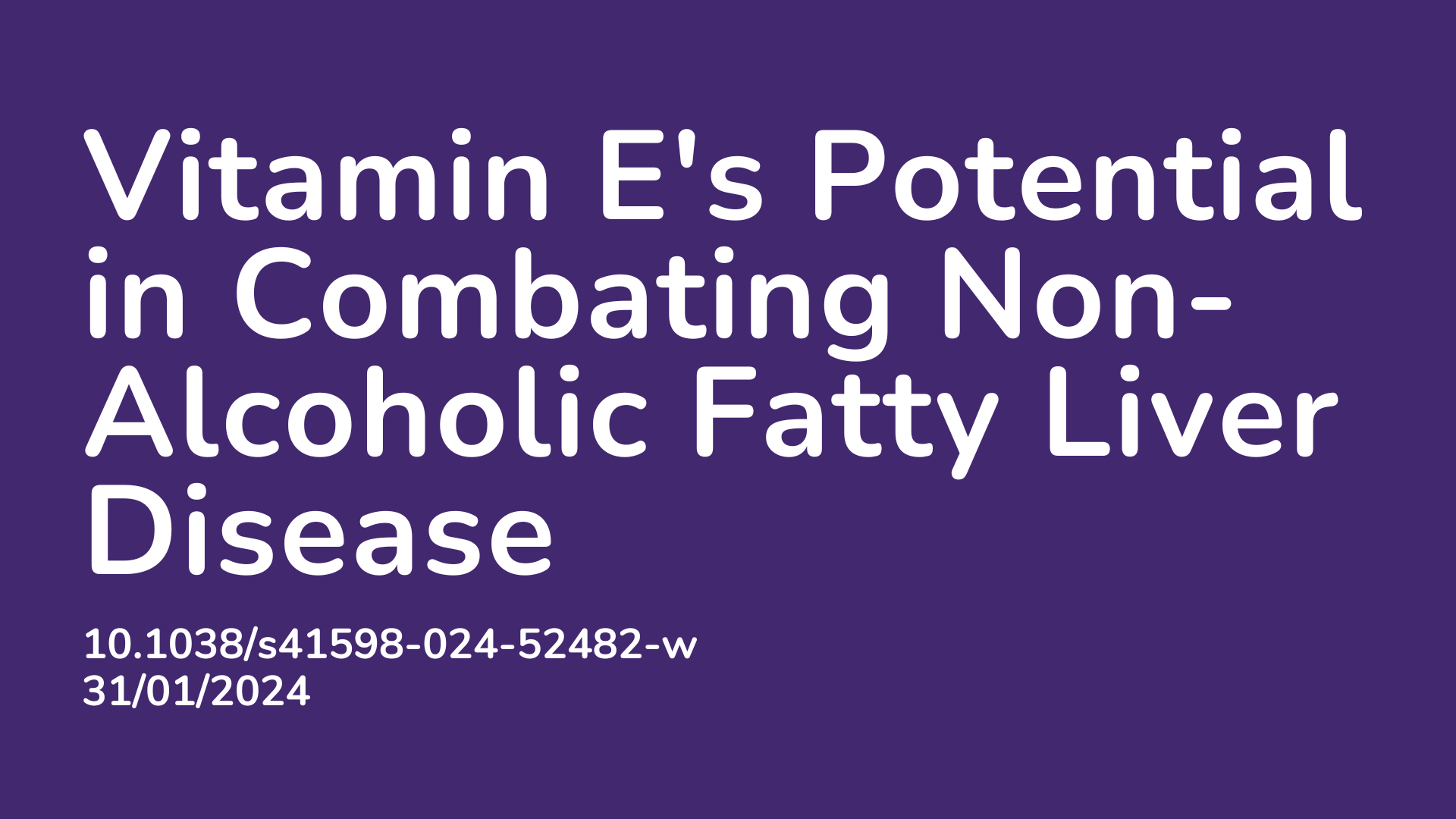Summary:
Non-alcoholic fatty liver disease (NAFLD), a common liver condition linked to oxidative stress, may benefit from the antioxidant properties of Vitamin E. By analyzing data from the National Health and Nutrition Examination Survey (2017-2020), researchers investigated the relationship between vitamin E consumption and NAFLD. The study, involving 6122 participants, uncovered a relationship between dietary vitamin E and NAFLD, even after adjusting for various factors. The relationship showed that when vitamin E levels were low, rates of NAFLD were high. Additionally, supplementary vitamin E displayed a protective effect. Interestingly, the protective effects were more evident in individuals without hyperlipidemia, which is when there are abnormally high levels of lipids (fats) in the blood. The authors concluded that enhancing dietary vitamin E intake could prove particularly advantageous in preventing NAFLD, particularly among those without hyperlipidemia.
Abstract: Non-alcoholic fatty liver disease (NAFLD) is one of the most common chronic liver diseases, whose severe form is associated with oxidative stress. Vitamin E as an antioxidant has a protective potential in NAFLD. Whether dietary intake of vitamin E, supplementary vitamin E use, and total vitamin E have a preventive effect on NAFLD requires investigation. A cross-sectional study used data from the National Health and Nutrition Examination Survey (2017–2020) was conducted. Vitamin E intake, including dietary vitamin E, supplementary vitamin E use, and total vitamin E, was obtained from the average of two 24-h dietary recall interviews. The extent of hepatic steatosis was measured by liver ultrasound transient elastography and presented as controlled attenuated parameter (CAP) scores. Participants were diagnosed with NAFLD based on CAP threshold values of 288 dB/m and 263 dB/m. The statistical software R and survey-weighted statistical models were used to examine the association between vitamin E intake and hepatic steatosis and NAFLD. Overall, 6122 participants were included for NAFLD analysis. After adjusting for age, gender, race, poverty level index, alcohol consumption, smoking status, vigorous recreational activity, body mass index, abdominal circumference, hyperlipidemia, hypertension, diabetes, and supplementary vitamin E use, dietary vitamin E was inversely associated with NAFLD. The corresponding odds ratios (OR) and 95% confidence intervals (CI) of NAFLD for dietary vitamin E intake as continuous and the highest quartile were 0.9592 (0.9340–0.9851, P = 0.0039) and 0.5983 (0.4136–0.8654, P = 0.0091) (Ptrend = 0.0056). Supplementary vitamin E was significantly inversely associated with NAFLD (fully adjusted model: OR = 0.6565 95% CI 0.4569–0.9432, P = 0.0249). A marginal improvement in total vitamin E for NAFLD was identified. The ORs (95% CIs, P) for the total vitamin E intake as continuous and the highest quartile in the fully adjusted model were 0.9669 (0.9471–0.9871, P = 0.0029) and 0.6743 (0.4515–1.0071, P = 0.0538). Sensitivity analysis indicated these findings were robust. The protective effects of vitamin E significantly differed in the stratum of hyperlipidemia (Pinteraction < 0.05). However, no statistically significant results were identified when the threshold value was set as 263 dB/m. Vitamin E intake, encompassing both dietary and supplemental forms, as well as total vitamin E intake, demonstrated a protective association with NAFLD. Augmenting dietary intake of vitamin E proves advantageous in the prevention of NAFLD, particularly among individuals devoid of hyperlipidemia.
Article Publication Date: 31/01/2024
DOI: 10.1038/s41598-024-52482-w



